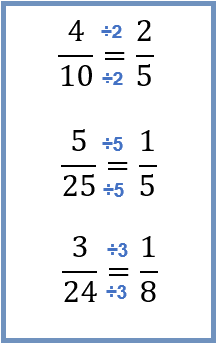How do you simplify fractions? Or, how do you reduce fractions?
In most cases, when fractions are introduced to students as a new topic in the classroom, the initial reaction is: "Here's another complex subject we have to deal with." But then, reactions change and fractions are seen as a kind of enjoyable game that is more of a technical challenge. So, what's particularly important about fractions? Understanding their meaning, the division of roles between the numerator and the denominator, and how to reduce them. Is it difficult to reduce fractions? Not really.
So, when will you need to reduce the given fractions?
- At the time it's required in an exercise/test.
- In case you want to work with smaller fractions.
